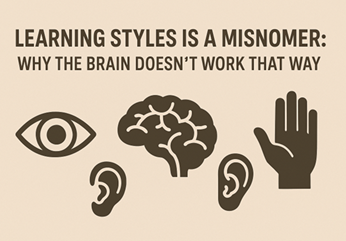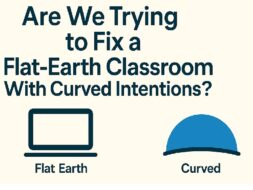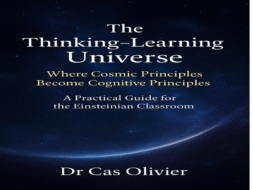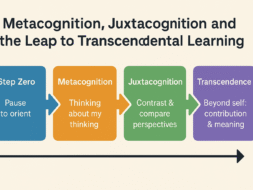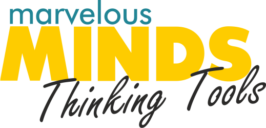You’ve probably heard it said: “Some learners are visual, others are auditory, and some are kinaesthetic.” It sounds thoughtful—progressive, even. But there’s a growing body of research and practical insight that tells a different story. More than that: it exposes a dangerous misdirection in education.
Let’s take a closer look at why “learning styles” is a misnomer, and how it distorts how we think about real learning.
1. Where does learning take place?
Learning doesn’t happen in your eyes. It doesn’t happen in your ears. It doesn’t happen in your hands or feet.
Learning happens in the brain.
The eye is not part of the brain. It receives light, sends data via the optic nerve, but doesn’t interpret or make sense of anything. This means that the highest status that the eye is allowed to have is that of a visual input device.
The ear is not part of the brain either. It collects sound waves and sends signals. The sound means nothing until the brain processes it. This means that the highest status that the eye is allowed to have is that of an auditory input device.
Even the body—your hands, limbs, muscles, skin—are external to the brain. Movement and touch are registered by sensors, but meaning is made in the brain. This means that the highest status that the eye is allowed to have is that of a visual input device.
So how can we speak of visual, auditory, or kinaesthetic learning, as if the input method defines the thinking?
That’s like saying you “digest with a spoon.”
I am not disputing that a person may have preferred input preferences, but the are however not learning preferences.
2. Input ≠ Understanding
Let’s test this with a simple example.
When you hear the word “chair”, do you see the word spelled out in your mind—or do you see a picture of a chair?
You see a picture.
Now reverse it. When someone shows you a picture of a chair, what forms in your mind?
The word “chair.”
In both cases, your brain does the work of conversion. Words become images. Images become words. Meaning is not in the eye or the ear—it’s in the brain’s ability to translate and associate.
This is why learners who hear a word but can’t form an image are what I call #auditoryblind—the sound enters, but the brain doesn’t anchor it to anything meaningful.
Likewise, learners who see a picture but can't verbalize what it is are #visuallydeaf—they’ve seen something, but their brain can’t give it a name.
3. The myth of kinaesthetic learning
We’re often told that some learners “need to move” to learn. While movement can support learning (e.g., through role-play or building), the body does not learn. The brain learns from the body's feedback.
A dancer doesn’t learn a choreography with their feet. Their brain processes rhythm, spatial patterns, and timing. The body executes what the brain has internalized.
Calling someone a “kinaesthetic learner” is like saying a soccer player thinks with their boots.
4. How is the brain wired for learning?
The brain doesn’t think in straight lines. It doesn’t follow our curriculum neatly. It hyperlinks. It jumps. It associates. It diverts. This is why traditional “knowledge transfer” fails—because it assumes the teacher’s clear explanation can be downloaded into the learner’s brain like a USB drive.
But the brain is not a passive recipient. It must do the work of thinking.
And that happens best when learners are the ones doing the explaining, not the teacher.
5. Who is doing the explaining?
Here’s the truth:
The person doing the explaining is the one doing the learning.
When the teacher explains, the teacher’s brain is in high gear and the learners’ brains are in low or no gear.
When the learner explains, the learner’s brain is high gear.
This is why flipped teaching (which is not the same as the flipped classroom) is so powerful. It activates the learner’s thinking instead of numbing it with passive input.
6. A better way forward
Rather than forcing learners into rigid style categories, we must recognize the unifying engine of all learning: the brain. Our job is to activate it, challenge it, and let it build its own pathways.
Let’s move away from eye-based, ear-based, or movement-based boxes, and toward brain-based facilitation.
Final thought
So no, you don’t learn with your eyes, ears, or hands. You learn with your brain.
Let’s stop labelling learners by their input channels—and start liberating them through real thinking.

